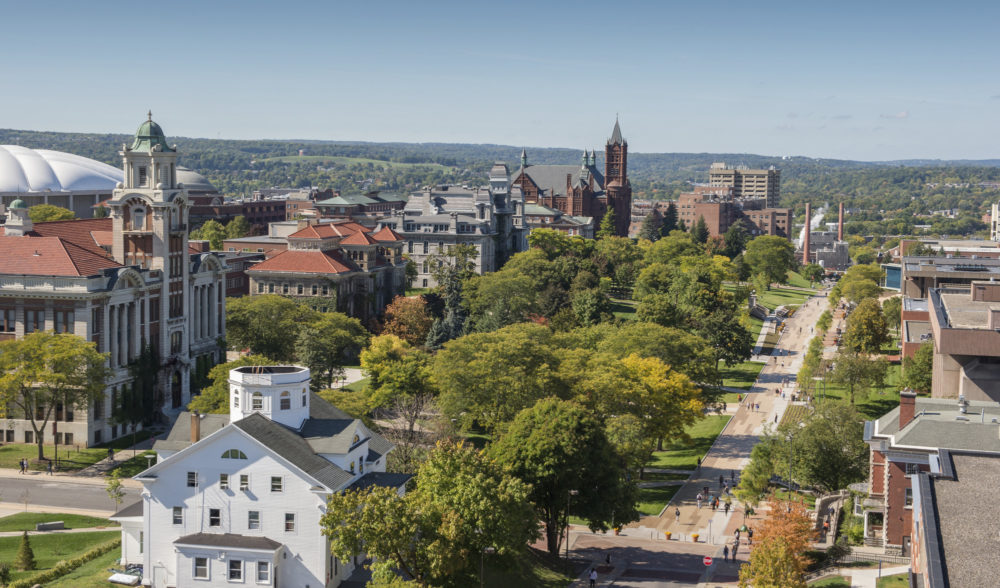
Syracuse University Einhorn Family Walk
Syracuse, NY
 Sasaki
Sasaki
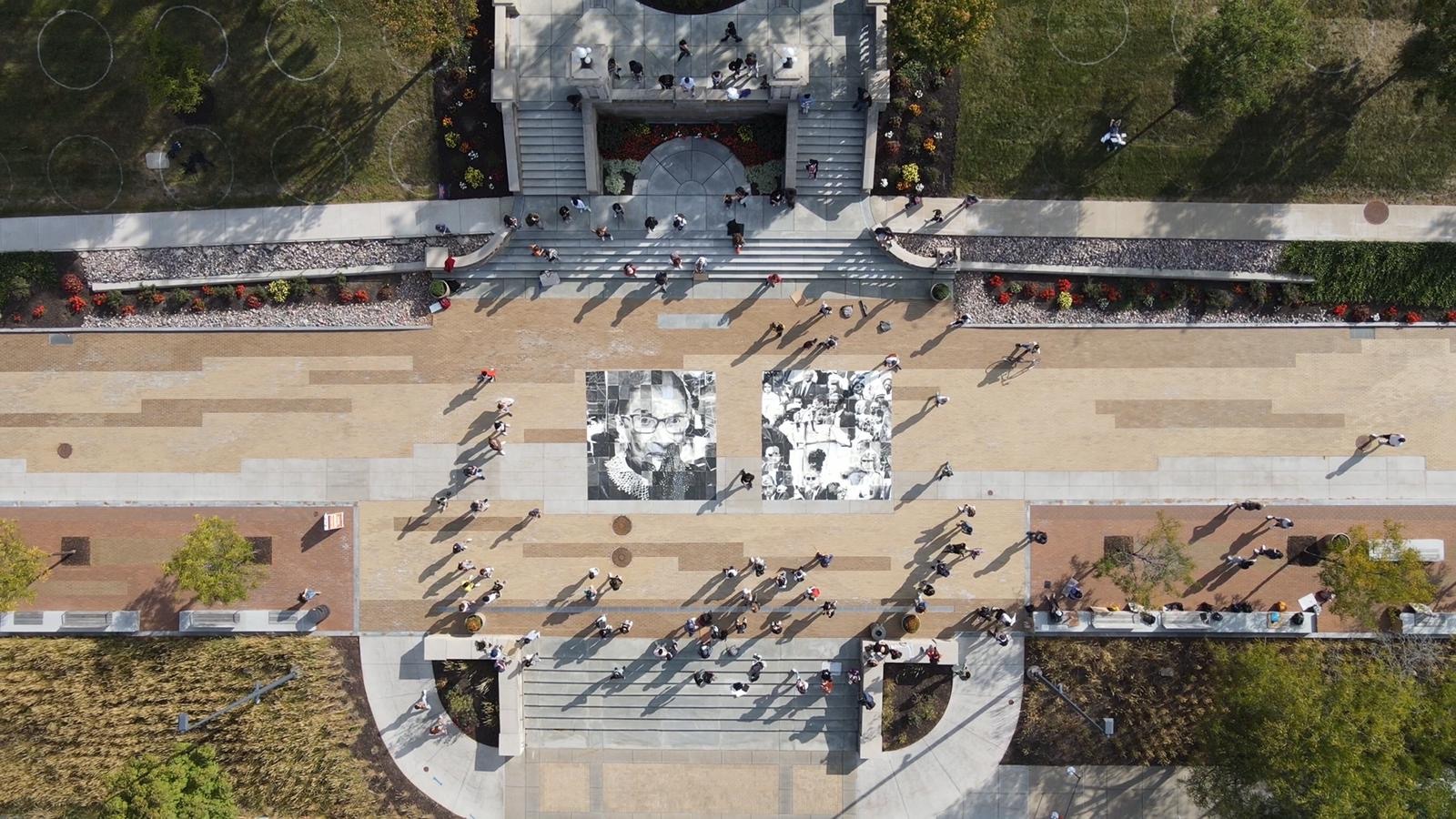
At Syracuse University in New York, the Einhorn Family Walk not only connects key campus destinations but also serves as a space to convene. Since it opened, the Walk has become a popular gathering place for student groups hosting events, students and professors chatting after class, and long lunches.
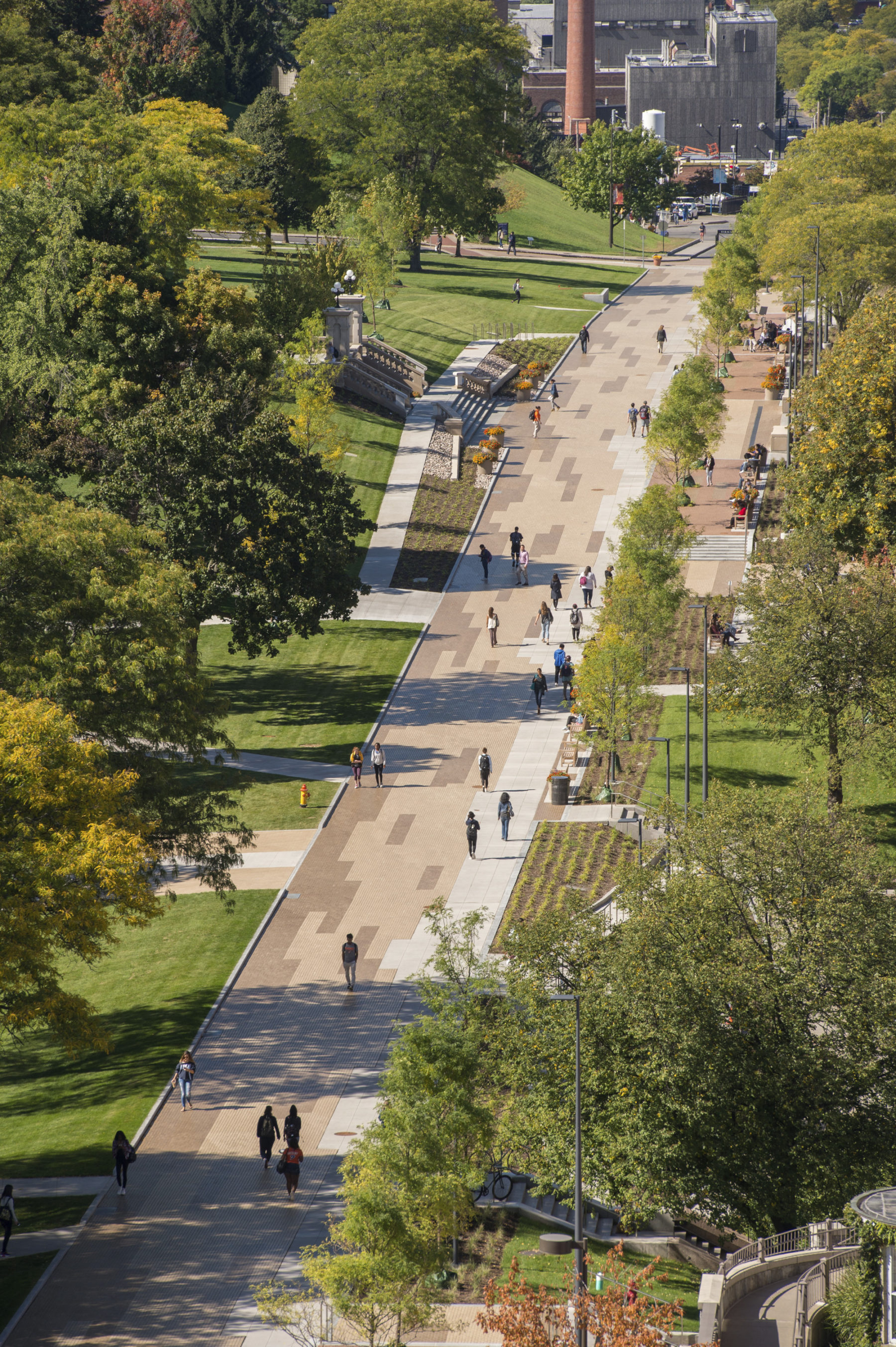
An implemented component of Sasaki’s Campus Framework Plan for the campus, the Einhorn Family Walk, also designed by Sasaki, is the first of three promenades to be built. Replacing what had previously been a car-dominated street, the Walk connects the university’s historic Old Row with the New Row, a line of newer student services buildings, with a dynamic and vibrant pedestrianized public space.
In October 2020, Valeria Rachel Herrera, Assistant Teaching Professor at Syracuse’s School of Architecture, assigned her freshman architecture students a unique art project. The project demonstrated another multi-layered use for the campus thoroughfare: displaying public art and encouraging discourse.
The class collaborated on two large-scale drawings, though the students did not know the subject matter they were depicting until all individual pieces of the drawing were assembled. Gathered on the Walk, students watched as the subjects of the large drawings were revealed: U.S. Supreme Court Justice Ruth Bader Ginsburg and U.S. Representative and civil rights activist John Lewis, two American heroes who passed away in 2020.
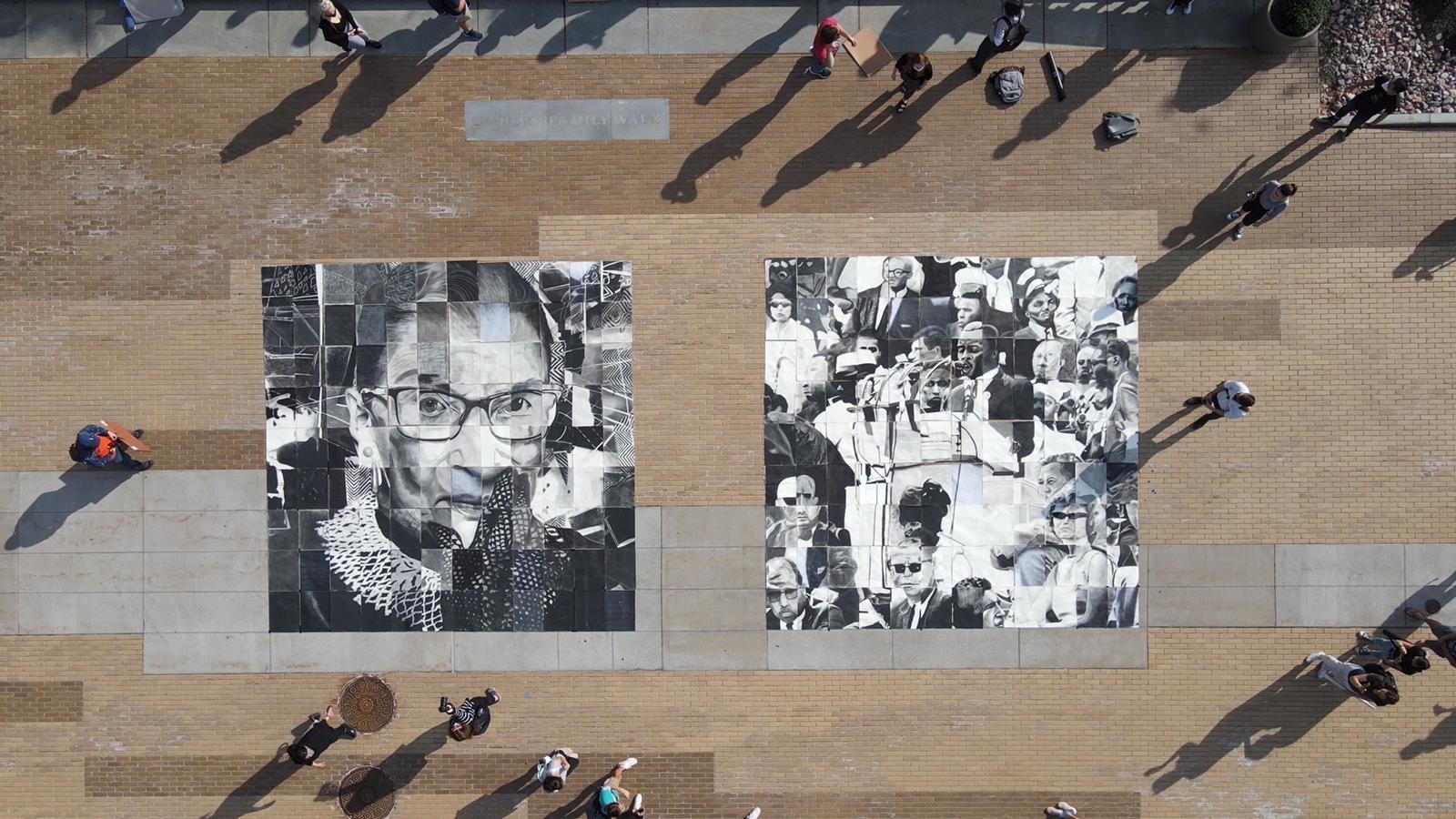
Photo courtesy of Zicheng Wang and Tianche Liu and Syracuse Architecture students
“This project introduced me to a new way of thinking about collaborative work and seeing it all come together to represent such a relevant time in our country really surprised me,” says Bella Klug, a student in the class. “Looking at the two images made me feel like I was a part of something greater than the project itself, which was really humbling.”
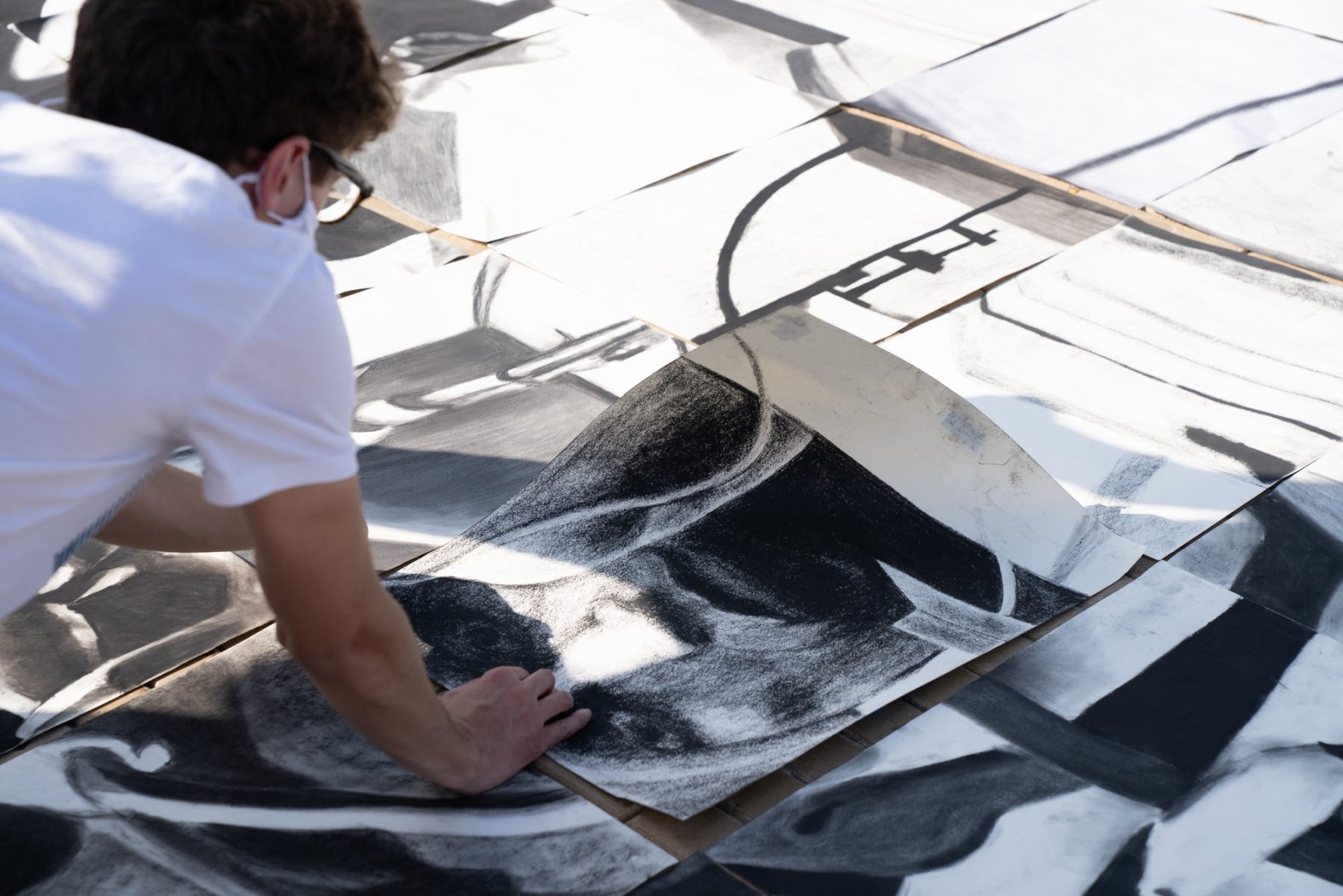
Many were deeply affected by the loss of Justice Ruth Bader Ginsburg and representative John Lewis, who were champions of social justice causes throughout their careers in public service. This kind of art-making gives students and faculty alike an opportunity to come together to honor figures that had a huge impact on them. Photo courtesy of Emily Steinberger and Syracuse Architecture students.
The Walk offered students an ideal backdrop to display the art—students coming from all over campus had an opportunity to visit the artwork or stumble upon it on their way to class. Importantly, the outdoor location gave students a safe venue in which to gather during a time when convening indoors was severely limited due to the pandemic.
The idea behind the Einhorn Family Walk extends the spirit of the oldest and most beloved Syracuse spaces across the span of campus; it brings people together in a shared experience of space that can inspire expression, exchange, and connection.